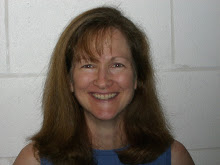Kin Domain Permaculture Garden
As the winter temperatures rise and the ground thaws, I'm spending more time at my window planning my garden. I imagine my layout of plants and hang onto the image. Then I draw a sketch using colored pencils. The color seems to give it substance and make the image more real. I let my senses enter the experience until I can smell, see, feel, taste, and hear each plant. I'm fascinated with permaculture. Although this can be difficult to implement in the city due to the question of consensus defined aesthetics, your backyard is usually yours alone. Give it a try. For those not familiar with the term, here is the explanation from the Living Earth Village.
Permaculture as defined by
Permaculture is the art of learning about the natural relationships between plants, animals, insects, soil, water, and sun and applying these naturally thriving conditions to intentional gardens, orchards, and forests that benefit humans. The goal is to create long-lasting relationships that maintain themselves over decades. As an example, when many different species of plants are planted together without rows or other spacing, insect pests do not tend to invade the plant species, eliminating the need for chemical sprays. You may choose to plant as many as 300 or more species of plants on your own parcel of land.
We have heard the question, "Agricultural subdivision? Isn't farming a bunch of work?" Our response is yes, traditional farming is a lot of work and the return on investment of time and energy is minimal - at best, one year's harvest and then you have to start all over again. Conventional farming methods, even conventional organic farming methods, involve planting rows and rows of very few species of plants, a scenario impossible in nature. So then farmers try to manipulate and control nature and prevent it from entering their fields with artificial chemical and organic pesticides, herbicides, and fertilizers. By using permaculture, none of this is necessary. Some plants take nutrients from the soil and deliver them to us in their fruits, others take nutrients from water and air and leave them in the soil. Some plants have shallow roots that take moisture and nutrients from the surface soil, others have deep roots that bring the moisture and nutrients up from below. When one plant crowds out others and prevents them from growing, it is an indication of an imbalance in the natural systems we have created and it becomes our job to address the root cause, rather than just the effect. When we invest our time, energy, and thought into these relationships the return on investment is infinite, potentially feeding our great-grandchildren 100 years from now and even their great-grandchildren.
For more information on the dream of this and more visit: www.livingearthvillage.com


0 Comments:
Post a Comment
Subscribe to Post Comments [Atom]
<< Home